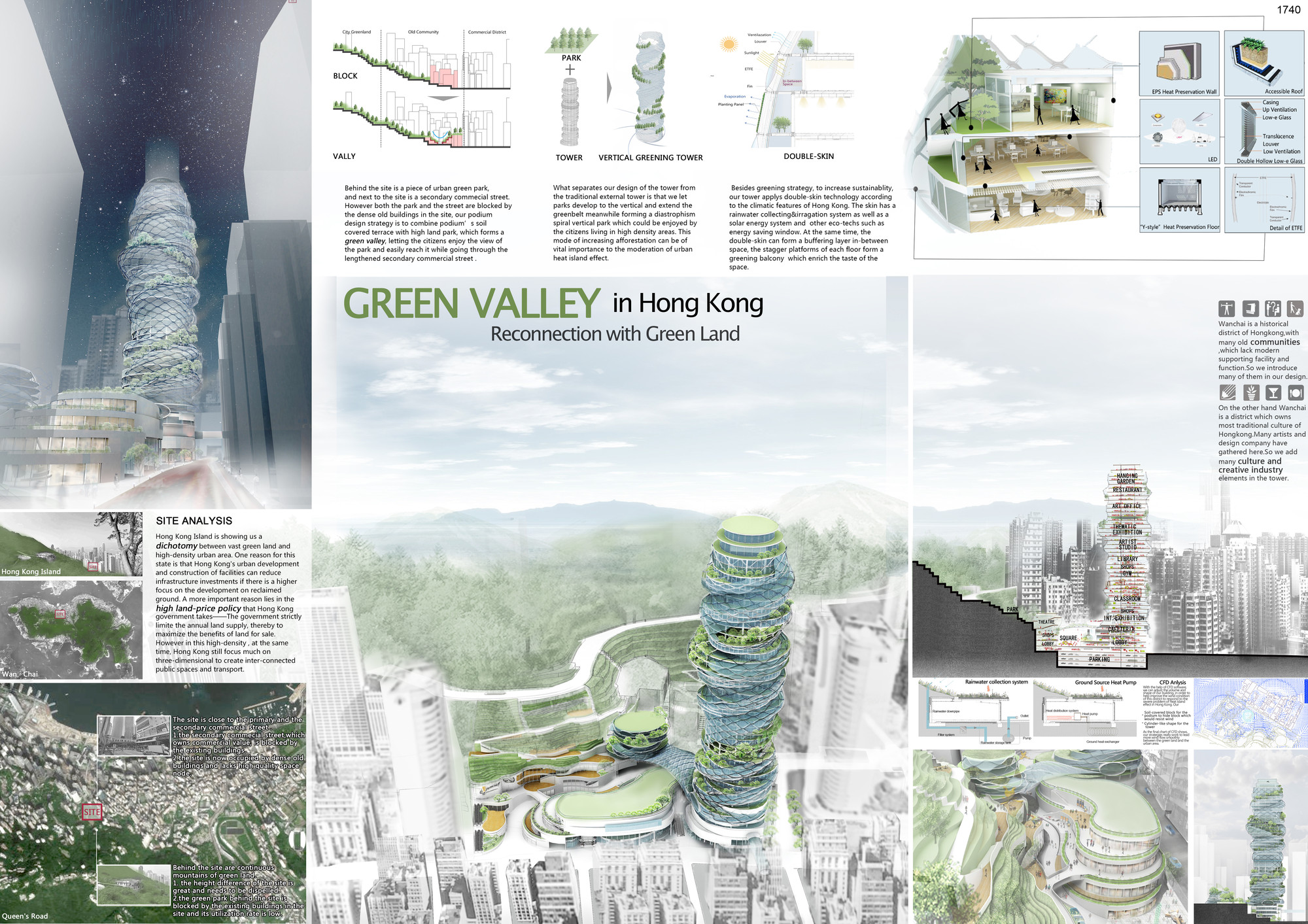.jpg?1410441042)
The Council on Tall Buildings and Urban Habitat (CTBUH) has announced five finalists in their 2014 Student Design Competition, which asked entrants to respond to the theme of "sustainable verticle urbanism" in order to "shed new light on the meaning and value of tall buildings in modern society."
"There has been a major transition in the sense of the value of the tall building and what it can contribute to the urban realm, and society in general," said former Competition Jury Chair William Pedersen of Kohn Pedersen Fox. "This transition moves the tall building away from just an instrument of financial exploitation and toward a development highly concerned with its impact on the city, the environment, and the urban habitat."
The winner of the competition will be announced at a special judging session as part of the CTBUH's 2014 Shanghai Conference which begins on Tuesday. Read on after the break for all the finalists.
Dust-Collecting Skyscraper / Hong Seob Ahn
.jpg?1410441041)
Responding to the so called 'yellow dust' which sometimes occurs in Chinese cities as the result of sand carried from the country's deserts, this proposal for a Beijing skyscraper offers a solution to one of the most pressing issues that arise during these dust storms: ventilation.

Whereas most residents have a choice between spending days in a poorly ventilated home or opening a window and allowing dust inside (a significant health risk), this tower sucks in air from the surrounding environment, purifies it, hydrates it, and finally oxygenates it with an internal 'green chamber' of trees. Residents open their windows not to the dusty outside, but to the inside of the building where there is plenty of clean, fresh air.
Re-Stitching the City / Mikela Marques, Michael Dawson, and Clara Senatore
.jpg?1410441061)
This proposal, part-skyscraper-part bridge, is designed to reconnect Johannesburg by providing the first adequate pedestrian bridge over the city's railway line. Occupying previously wasted space next to the tracks, the building's facade and the tension cables of the bridge adopt the language of a woven cloth to symbolize the way the city is woven back together.

The design provides a direct response to Johannesburg's car-centric culture by providing no parking and only allowing access to maintenance and emergency vehicles, which the designers hope will encourage residents to walk or cycle.
Clean Air Tower / Alex Balchin
Another tower which responds to issues of air quality, this design for Tianjin uses industrial air-cleaning technology together with a stack effect air circulation system to clean 8.5 million cubic meters of air per year.
.jpg?1410441249)
The tower is also modular and designed to be disassembled after the air quality improves, ready to be re-installed at another city where the air quality is poor.

Vertical Aquaponic Farm / Matthew Humphreys
.jpg?1410441173)
In the city-state of Singapore, where agricultural land is almost non-existent, 97% of food is imported. This design for a vertical farm addresses the issue with a high-tech aquaponic growth environment, located in the central business district with an integrated food market at ground level.
.jpg?1410441397)
In addition, the building is intended as an adaptable prototype, ready to be deployed at sites throughout Singapore.

Green Valley / Ran Song, Mengyu Li, Chengxing Hou, and Qian Zhang
.jpg?1410441280)
Reacting to Hong Kong's 'high land price policy,' in which the city restricts the availability of land to keep land sale values high, and Hong Kong's increasing population density, this proposal includes both residential space and green space in one, to ease the urban heat island effect, encourage biodiversity and provide recreational space to residents.
.jpg?1410441354)



.jpg?1410441061)
.jpg?1410441041)
.jpg?1410441354)
.jpg?1410441397)